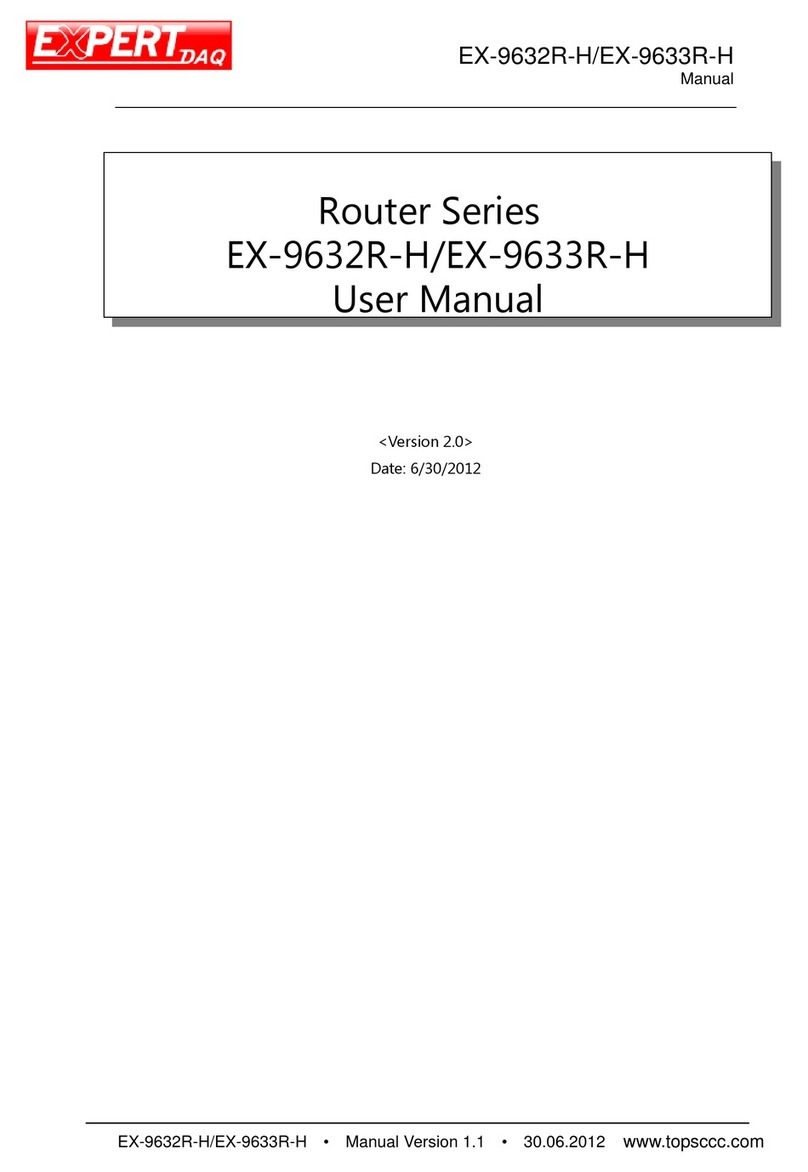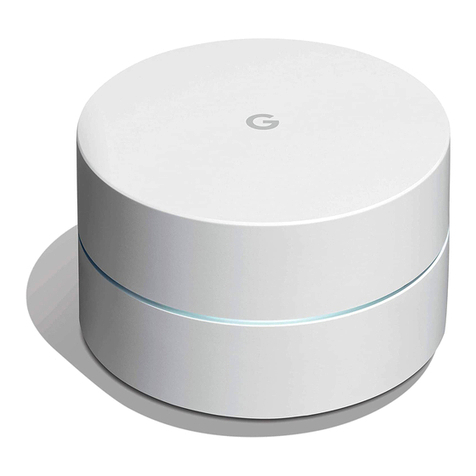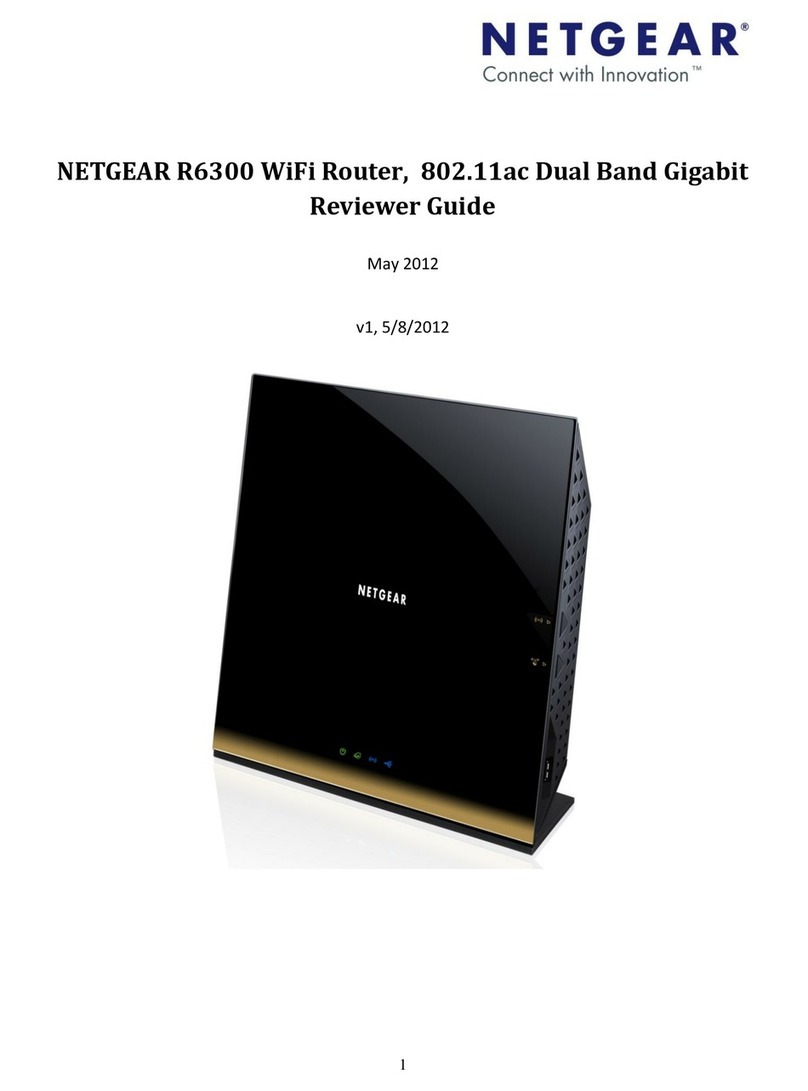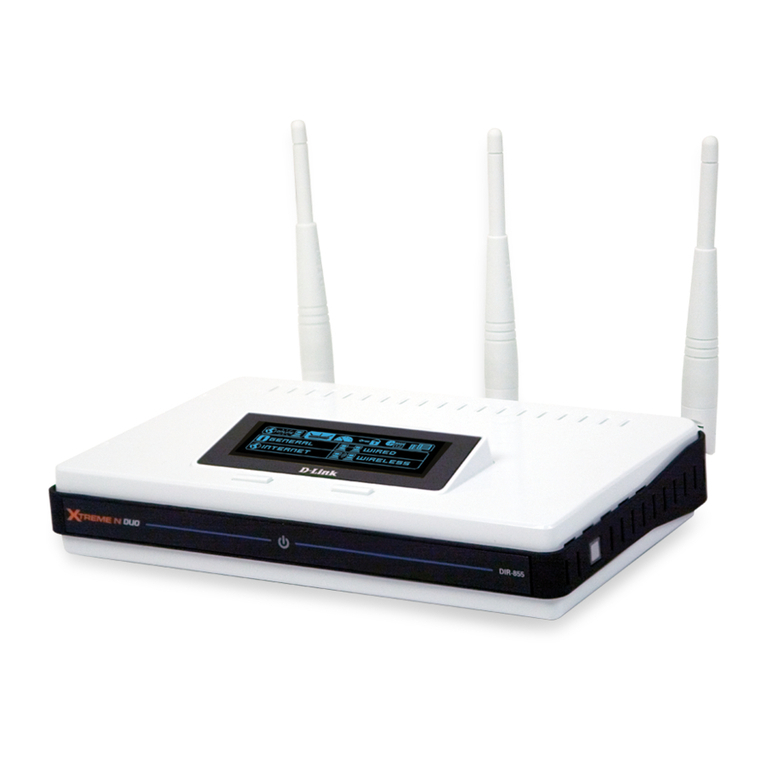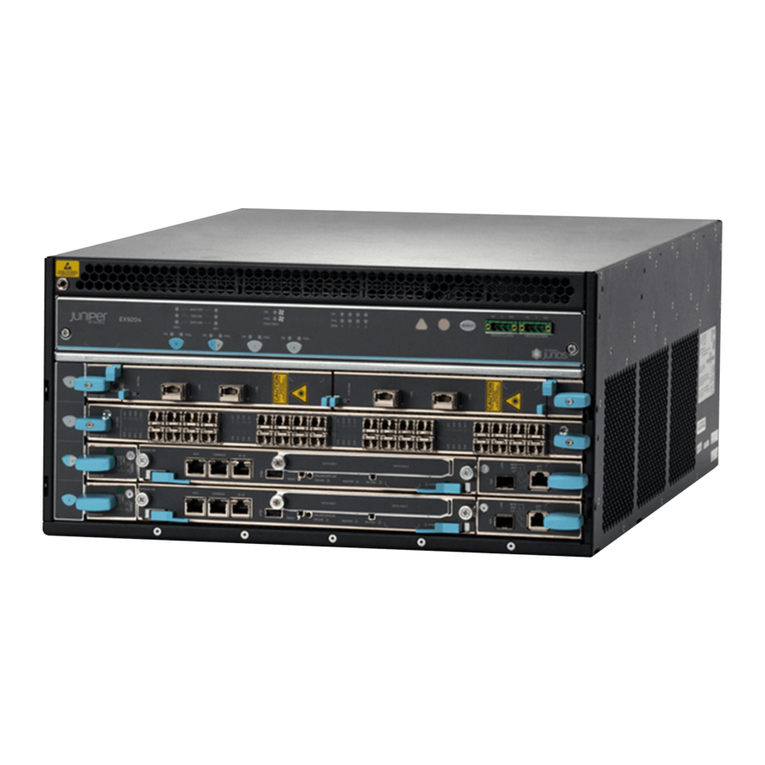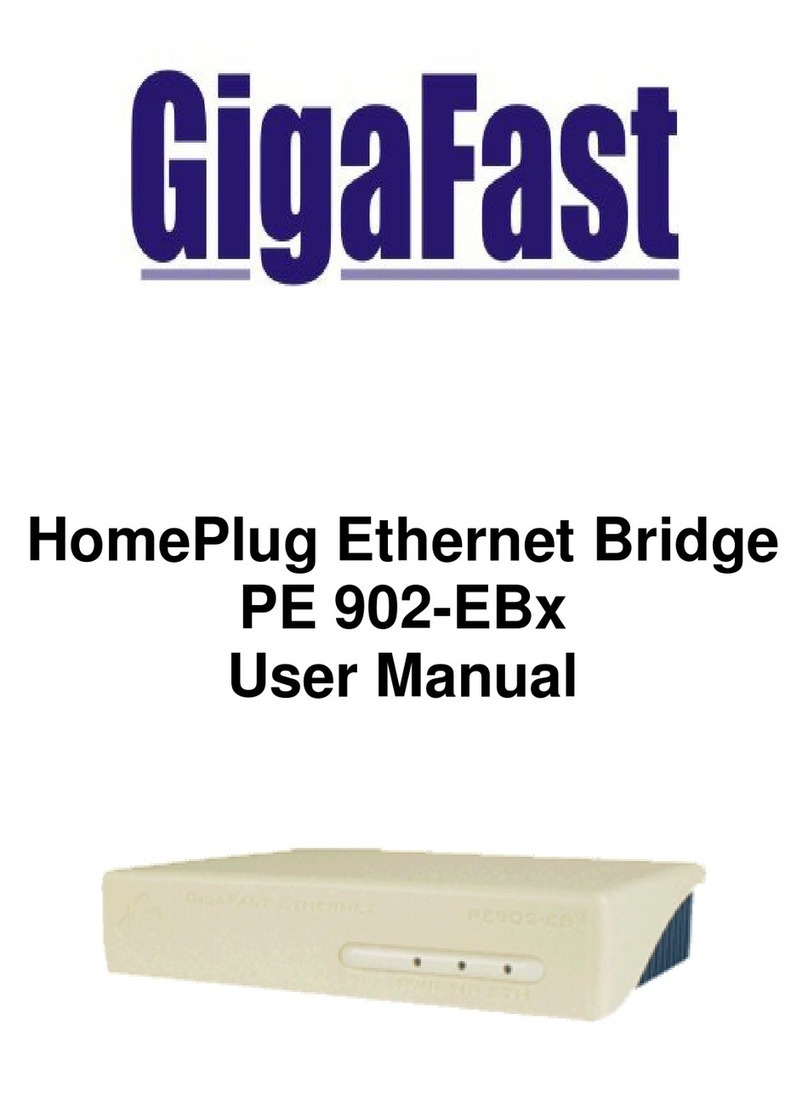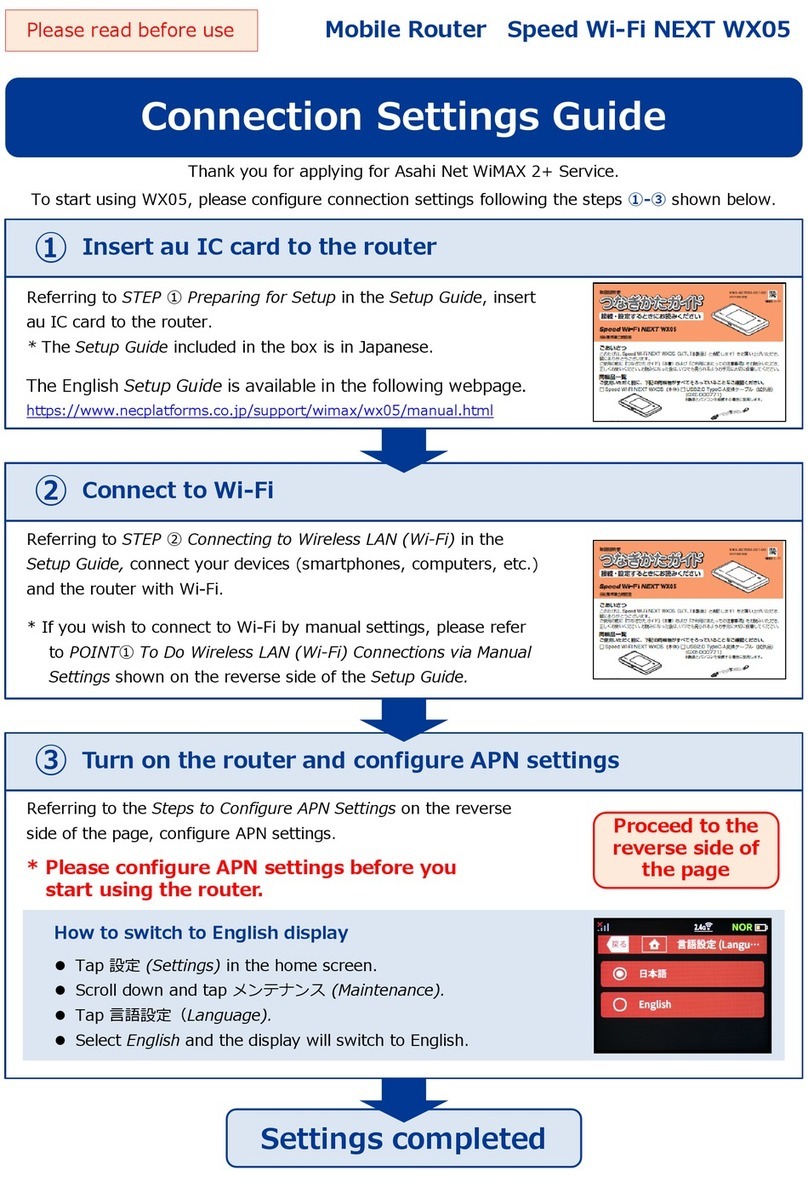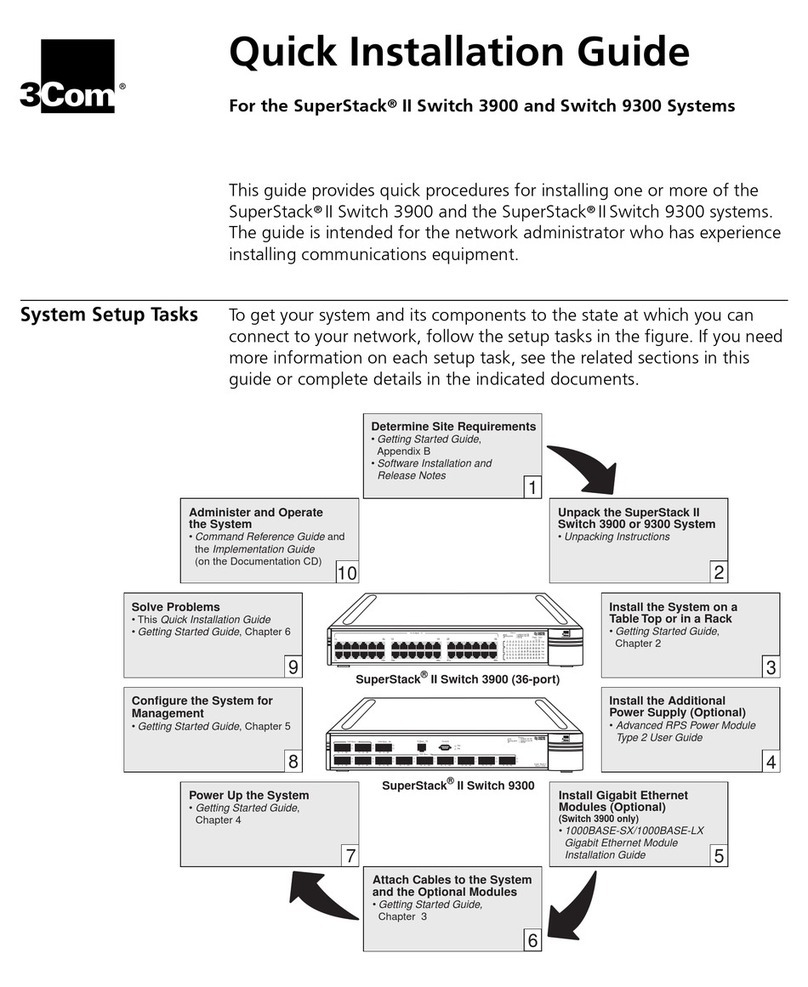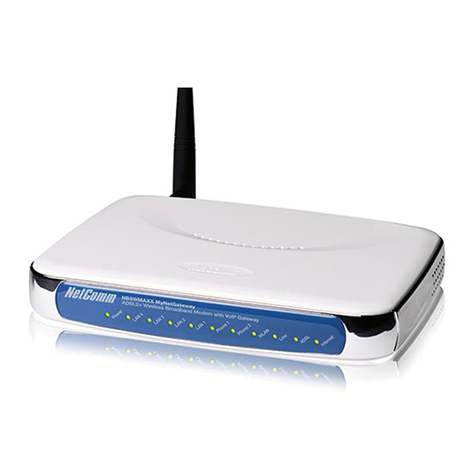Mako Networks Mako 6500-A2 User manual

Mako 6500-A2 and A2/3G
Product Handbook v1.3

Mako Networks
Mako 6500-A2/3G Product Handbook
Version 1.3
©2012 Mako Networks Limited. All rights reserved.
The Mako logo is a registered trademark of Mako Networks Limited.
Other product and company names mentioned herein can be trademarks and/or registered trademarks of
their respective companies.
Information in this document is subject to change without notice and does not represent a commitment on
the part of Mako Networks Limited.
No portion of this document may be reproduced in any form, or by any means, without prior written
permission from Mako Networks Limited.
This document should be read in conjunction with the Mako Networks Terms and Conditions available from
the Mako Networks website (http://www.makonetworks.com).
Mako Networks, its parent or associate companies may have patents, patent applications, trademarks,
copyrights, or other intellectual property rights covering subject matter in this document. Except as expressly
provided in any written licence agreement from Mako Networks, its parent or associate companies, the
furnishing of this document does not give you any rights or licence to these patents, trademarks, copyrights, or
other intellectual property.

Table of Contents
1Introduction..................................................................................................................................................4
1.1About this Product Handbook ............................................................................................................................................ 4
2Unpacking and Connection....................................................................................................................5
2.1Placement ................................................................................................................................................................................... 5
2.2What Goes Where .................................................................................................................................................................... 6
2.3Connection sequence............................................................................................................................................................. 7
2.4Additional items required for installation ....................................................................................................................... 7
2.5Sample connection.................................................................................................................................................................. 8
3Turning on.....................................................................................................................................................9
3.1Front Panel LEDs Overview.................................................................................................................................................10
3.2Testing........................................................................................................................................................................................11
3.3Possible problems and their symptoms ........................................................................................................................11
4Login............................................................................................................................................................. 12
4.1Login...........................................................................................................................................................................................12
5Troubleshooting....................................................................................................................................... 13
5.1What to do if:............................................................................................................................................................................13
5.2Diagnosing the Mako 6086-A2 Panel Indicators.........................................................................................................14
6Product Specifications ........................................................................................................................... 16
6.1Hardware Specifications......................................................................................................................................................16
6.2Interface Specifications........................................................................................................................................................16
6.3Compliance Specifications..................................................................................................................................................16
6.4Panel LEDs.................................................................................................................................................................................17
6.5Modem Specifications..........................................................................................................................................................17
6.6Feature Summary...................................................................................................................................................................17
7Regulatory Information ......................................................................................................................... 18
7.1Safety Notices..........................................................................................................................................................................18
7.2Radio Interference..................................................................................................................................................................18
7.33G Radio Interference...........................................................................................................................................................18
8Limited Warranty ..................................................................................................................................... 19

Mako 6500-A2 and A2/3G Product Handbook v.1.2 Page 4 of 24
Congratulations on choosing your Mako 6500 appliance. Your appliance may also be referred to as
the Customer Premise Equipment (CPE) or simply Mako.
Your Mako is managed remotely by Mako Networks via a web server, using your standard broadband
Internet connection and the Mako Networks Central Management System (CMS).
The CMS uses a standard web browser interface for personal configuration and reporting, providing
enterprise level control over your connection; giving you freedom to manage and monitor your
business network over any Internet connection, anywhere. Refer to the appendix, Overview, for a
general overview of your new device.
This handbook provides a guideline for using the Mako 6500 appliance in a standard
configuration environment.
The intended audience for the guide is the actual end user of the Mako System, you.
Note: For the remainder of this user guide, the Mako 6500 appliance will be referred to as the Mako and
the Mako Networks Central Management System as the CMS. Any personal device using the Internet to
connect to the CMS will be simply referred to as a PC regardless of type.
It also needs to be noted that the CMS is integral to the Mako and this user guide should be
complemented with the Mako CMS configuration and reporting user guides. Your Mako and CMS
are referred to as the Mako System, see Figure 1, below for additional information on the Mako
System, visit http://www.makonetworks.com/sys.html.

Mako 6500-A2 and A2/3G Product Handbook v.1.2 Page 5 of 24
Opening the carton you should find the following items:
•Your Mako and its base
•A power cord and a DC power adapter
•2x Cat-5 Ethernet cable (1 red and 1 green)
•RJ-11 ADSL cable (regional specific)
•3G antenna (for the 3G model only)
•Two Wireless LAN Antennas
•USB Key – only supplied in some locations
Place the Mako in a convenient spot adjacent to your LAN hub or switch and the incoming
Internet connection. The location should preferably be off the floor, out of direct sunlight and
adequately ventilated, with a compatible power socket available.
Avoid placing your Mako 6500 appliance near devices that may cause radio interference with the
mobile data signal such as microwave ovens, cordless phones etc. You also need to avoid placing
your Mako in an area that will inhibit reception from the cellular tower. Items and obstacles that
can inhibit reception include washers, dryers, refrigerators, metal cabinets and especially any
water filled items, such as tubs of water, aquariums, water heaters etc.
Important: 3G models must be operated in a location that is out of immediate proximity to any
person for extensive periods, a safe distance is 20cm or more, see paragraph 7.3

Mako 6500-A2 and A2/3G Product Handbook v.1.2 Page 6 of 24
After unpacking and placing your Mako, you need to connect the various bits and attach the
relevant cables. Figure 3 and its associated table detail all possible connections to the rear of
your Mako.
Note that the items highlighted in red box apply to the 6500-A2/3G models only. Do not connect any of
these items yet, it’s important to follow a connection sequence, see chapter 2.3 Connection sequence.
Key Item Description
1 +12VDC DC power socket – (use only the supplied power supply). DO NOT plug this in now.
2 LAN 1 Port Ethernet – Connects to an Ethernet-equipped computer, hub, or switch using the supplied
RJ-45 cable connection. The Red LAN 1 connection is typically the PCI connection.
3 LAN 2 Port Ethernet – Connects to an Ethernet-equipped computer, hub, or switch using the supplied
RJ-45 cable connection.
4 USB Port For use with the enclosed USB key. Your installer needs this to complete installation in
some areas. Don’t plug it in unless requested to do so. If in doubt, check with your installer.
5 SIM A 3G capable SIM card, activated and ready for data. Not supplied by Mako Networks.
6 ADSL Port Use the provided ADSL cable to connect your Mako to the appropriate outlet. This could
be to a filtered phone jack (filter not supplied) or a dedicated ADSL outlet.
7
Wireless
LAN
Antennas
To connect the antennas, screw them clockwise into the threaded connector.
8 3G Antenna To connect the antenna, screw it clockwise into the threaded connector.

Mako 6500-A2 and A2/3G Product Handbook v.1.2 Page 7 of 24
Figure 3
1. Connect the supplied cables to their corresponding sockets on the Mako.
2. Connect the Power Cable to the mains supply – Not to the Mako at this stage.
3. Connect the ADSL Cable to the network service provider’s termination point (Jack Point).
4. Insert the 3G Sim card provided by you service provider. (3G model only)
5. Attach the external antenna. (3G model only)
6. Connect the LAN Cables to your network’s hub or switch.
DO NOT TURN YOUR MAKO ON AT THIS STAGE!
I.e. Do not plug the power cable into the rear of the Mako.
If this is the first time you are using your Mako, place the supplied USB Key in the USB port
at the rear of your Mako – If your Mako was not supplied with a USB Key you do not need one in
your location and can skip this step, however it is advised to check with your installer.
Note: There is no on / off switch. To turn on the Mako, simply plug in the low power 12VDC cable into the
back of your Mako. Do not plug this in now, see section 3 Turning on for details on switching your Mako
on.
Before getting started, make sure you’ve received an email with your Mako username, access
code, and management server URL. You’ll need these later to access the Mako Networks Central
Management System.
You may need to download a special configuration file from the Mako Networks CMS to
complete the installation of your Mako 6500 appliance. Your reseller will inform you if this file is
needed, and provide instructions on how to obtain the file from a secure website.
Note that your Mako has no buttons to press or switches to flip. All interaction with your Mako
happens via the secure CMS. You’ll need to log into the website to make any changes to the
appliance configuration, view reports, or perform user administration.
There are a few special circumstances to be aware of:
•HUB OR SWITCH PORT
If your office network has three or more devices, a switch will be required. Your existing
office network switch needs to have a spare RJ-45 connection Port available for the
Mako; if not, you need to either upgrade your existing hardware to increase the
available Ports, or install an additional hub or switch. This is not the responsibility of
Mako Networks or your reseller.
•DIRECT CONNECTION TO A COMPUTER
If you are connecting directly to a computer can use the supplied or any standard
Ethernet cable.
Note: A crossover cable isn’t required as this is automatically switched by the Mako hardware.
•POWER SUPPLY
A spare standard AC power mains socket outlet, 220V or 110V is required, the power
supply is auto switching. It’s recommended using a surge protection unit, not supplied,
for the mains connection.
•ESSENTIAL ITEMS
6500-A2 and 6500-A2/3G Model:

Mako 6500-A2 and A2/3G Product Handbook v.1.2 Page 8 of 24
•An active Internet connection
•A dedicated ADSL output or filtered phone jack, (ADSL filer not supplied).
6500-A2/3G Model only:
•A 3G capable SIM card, activated and ready for data. The Mako also needs to be
within your provider’s 3G coverage and in a location that doesn’t interfere with
the 3G reception. Avoid placing your Mako near devices that may cause radio
interference with the mobile data signal such as microwave ovens, cordless
phones etc. You also need to avoid placing your Mako in an area that will inhibit
the reception from the cellular tower. Items and obstacles that can inhibit
reception include washers, dryers, refrigerators, metal cabinets and especially
any water filled items, such as tubs of water, aquariums, water heaters etc.
All Models:
•A PC with a web browser installed.
•For connection to a PC, you can directly connect to either of the Mako’s LAN
ports.
Refer to Appendix 3 on page 13 for additional information and considerations when Connecting
to your ADSL or 3G service.
The network diagram below illustrates a typical Mako installation. LAN1 and LAN 2 are separate
networks, e.g. office and EFTPOS, or office and servers. Use of LAN 2 is optional, as is LAN
separation, i.e. 8 office PCs could be connected to both ports using two 5 port switches.
In a merchant environment, one network will be reserved for payment terminals. Chapter 3
onward illustrates how to physically connect your Mako to your networks.

Mako 6500-A2 and A2/3G Product Handbook v.1.2 Page 9 of 24
Power up your Mako by plugging the power adaptor into the DC power socket at the rear. Now
observe that status of the front panel LEDs.
There are ten “LED” indicators, for now we only need be concerned with four of these:
•POWER
•TX/RX
•LINK
•READY
When turning on for the first time, your Mako will go through a self-configuration process in the
sequence detailed below.
Step LED and status
Power TX/RX LINK Ready
1.
Your Mako will establish a connection with
the local exchange and the LINK LED will
change from flashing to solid when this is
complete.
On Off
Flash
|
v
On
Off
2.
After a connection is established with the
exchange the Mako will connect directly to the
CMS to download its configuration. The DSL’s
TX/RX LED will flash during this download to
indicate activity.
On Flash On Off
3.
Once the profile has been downloaded from
the CMS, the READY LED will illuminate,
indicating that your Mako finished its
configuration process and is ready to be used.
On N/A On
On
During Step 2 it’s vital that this download is completed before power is removed from you Mako.
If power is removed during this process, you Mako will have to be returned to you reseller for
reconfiguration. The POWER LED should be on while download of the secure profile takes place.
Note: Allow up to ten minutes for the LINK LED to illuminate and your Mako to be ready for use.
DO NOT unplug the power for any reason after first powering up your MAKO for at least 20min
after the initial power up.

Mako 6500-A2 and A2/3G Product Handbook v.1.2 Page 10 of 24
These LEDs will only be used for diagnostics and configuration. During normal operation you
needn’t worry about the status of these LEDs.
Key Name On Off Flashing
1 Power
Indicates that the Mako is
connected to a power
source
Mako is off
2 TX/RX Internet data activity
3 LINK
An active and established
DSL connection to your
service provider
No DSL
connection or
service provider
outage
A DSL connection to
your service provider
during configuration
4 TX/RX Data activity with LAN 1
5 LAN 1 Link is present with LAN 1
6 TX/RX Data activity with LAN 2
7 LAN 2 Link is present with LAN 2
8 WAN 1 The Mako has established
a connection to your ISP
DSL isn’t
connected
PPP is connecting. Slow
flash – DSL is training
9 READY
(ADSL Only)
All Mako services are
ready to operate
9 WAN2
(3G Only)
The Mako has established
a connection to your ISP
and the Mako is ready
Mobile data not
connected
Dial tone established.
Slow flash – unable to
establish a dial tone.
10 ERROR An error condition exists
Refer to Chapter 5.2 Diagnosing the Mako 6086-A2 Panel Indicators on page 14 below for details
on error messages relayed through these Panel LEDs.
When the LINK, WAN and READY LEDs are glowing, your Mako is connected to the Internet and
ready for use.

Mako 6500-A2 and A2/3G Product Handbook v.1.2 Page 11 of 24
You can test whether you have Internet communications established by opening a web browser
on one of your office PCs and accessing two or three websites. For example, a news website (e.g.
www.cnn.com) or a search engine (e.g. www.google.com).
If you are having difficulties, do try more than one website, as they are sometimes “off the air” for
various reasons of their own. If web-browsing services work, then Internet access is functional
and all other services should be available.
For a detailed list of possible problems and suggested solutions refer to chapter 5
Troubleshooting on page 13.

Mako 6500-A2 and A2/3G Product Handbook v.1.2 Page 12 of 24
Open your Web browser browse to your Mako Management website (a link to this is provided on
the e-mail sent to you with your user account details), depending on your browser software and
press Enter. Click the Customer Login button on the top right of the window.
To administer your Mako, Login to the Mako Networks CMS by entering your user name and
password and then clicking the Login button. The process is detailed in the CMS Setup and
Configuration Guide.
NOTE: You must accept Cookies to access the Mako Networks website, and you must have JavaScript
enabled. These properties are set in your browser preferences.
•While accessing the Mako Networks website, your browser will be switched into a secure
mode, known as SSL (Secure Socket Layer) – https://, in which traffic between the
browser and the Central Management Servers is encrypted.

Mako 6500-A2 and A2/3G Product Handbook v.1.2 Page 13 of 24
!
The website provides you with detailed help on obtaining reports on your traffic, updating the
configuration of your Mako, and updating your customer details.
Your Secure Customer Login:
Web Site: http://www.makonetworks.com
1. Click Customer Login
2. Enter your UserName and Password
3. Click Login or press Enter
!
It is vital that you take great care of your password.
•If you lose the password you are unable to obtain help from the website, obtain traffic
reports, or update your Firewall configuration.
•If the password is exposed to a third party, your computer network immediately
becomes insecure and is at risk from an attack.
You must follow the Forgot Password? link on the Mako CMS to create a new password
for your account. A temporary access code is issued to your email address to confirm
your request. You must contact your Reseller if you have changed email addresses.
!
You may lose your ADSL connection for a number of reasons; including telecommunications
network provider problems and equipment failure.
However, you can still access the Web Site using any available Internet connection and web
browser software.
•The Web Site is specifically designed to work acceptably over ordinary modem
connections, though of course data transfer will be slower than over your ADSL
connection.

Mako 6500-A2 and A2/3G Product Handbook v.1.2 Page 14 of 24
•The Web Site has also been checked for compatibility against Internet Explorer versions
7.0 and later, Firefox versions 2 and later and several others.
•A problem on the ADSL line. If you believe that the line is at fault, please contact your
Internet Service Provider Help Desk for status information on the circuit. They will work
in conjunction with the network service provider to resolve the problem.
•A faulty profile, if the configuration profile of your Mako Appliance has recently been
changed. Another possibility is that the network gateway configuration of your office
PCs has been changed. If you believe the problem is with the Mako the please contact
your reseller, who will be able to check the status of the appliance and verify the profile.
Some PCs on your office network can access the Internet, others cannot. Or perhaps
some services work but others do not. Both of these indicate a faulty configuration of
the network and/or PCs in your office. If you believe the problem is with the
configuration of the network and/or PCs in your office, then please contact your site
support organisation.
!
Symptom
•Power indicator doesn’t illuminate after power on.
Probable Cause
•DC power supply may be defective.
Possible Solutions
•Check for any loose connections.
•Ensure that there is power from the outlet by plugging in some other device.
•If all of the above fail to resolve the problem contact your reseller.
!
Symptom
•LINK indicator doesn’t stop flashing after power on.
Note: Allow up to 10 minutes for the Mako to configure when first powering up.
Probable Cause
•The Mako or ASDL cable may be defective.
•Your ISP may be having a temporary outage.
Possible Solutions
•Check for any loose connections and ensure that the cable is connected at both ends.
•Examine the cable and look for any obvious defects.
•If all of the above fail to resolve the problem contact your reseller.
!
Symptom
•This indicator is unresponsive, i.e. it’s not flashing. This is an indication that there is no
ADSL data activity.
Probable Cause
•The Mako or ASDL cable may be defective.

Mako 6500-A2 and A2/3G Product Handbook v.1.2 Page 15 of 24
•Your ISP may be having a temporary outage.
Possible Solutions
•Check for any loose connections and ensure that the cable is connected at both ends.
•Examine the cable and look for any obvious defects.
•If all of the above fail to resolve the problem contact your reseller.
!
•This indicator doesn’t illuminate.
Probable Cause
•The Mako or LAN cable may be defective.
Possible Solutions
•Check for any loose connections and ensure that the cable is connected at both ends.
•Examine the cable and look for any obvious defects.
•If all of the above fail to resolve the problem contact your reseller.
!!
•This indicator illuminates for 5 seconds then flashes 3 times (or 4 depending how you
count), then repeats.
Probable Cause
•Incorrect configuration.
•Incorrect PPP username and/or password.
Possible Solutions
•Double-check the username and password on the configure Internet page.
•If the above fails, contact your reseller.
!"
•This indicator illuminates for 5 seconds then flashes 5 times (or 6 depending how you
count), then repeats.
Probable Cause
•This error indicates that a connection was made to the server, but there was no response
from the server and timed out.
oThere could be a problem with your ISP's network.
oThere could be communications problem caused by heavy line noise.
Possible Solutions
•Contact your ISP and ask them to check your connection and also ask them to perform a
line noise test.
•If all of the above fail to resolve the problem contact your reseller.

Mako 6500-A2 and A2/3G Product Handbook v.1.2 Page 16 of 24
Processor 500Mhz - Low power – 32 bit AMD
System Memory 256MB
Storage 128MB
LAN Interface 2 x RJ11 10/100Mbps ports
Chassis Dimension 218x218x40mm (L x W x H)
Power Supply External 100-240VAC Input (50 or 60Hz) 12VDC output
Operating Temp. +5 C to +40 C
Humidity 10% - 90% relative, non-condensing
1xADSL2+ (RJ11) ITU G.992 ADSL 1/2/2+ port (Main WAN interface)
2xEthernet (RJ45) 10/100Mbit fast Ethernet ports
1 power socket 12VDC input for supplied external power supply
1 USB For support functions, i.e. configuration and security updates
ADSL Standards ANSI T1.413 i2, ITU: G.992.1 G.dmt (ADSL1),
G.992.3 (ADSL2), G.992.5 (ADSL2+ Annexes A & M)
2G Standards* GSM, GPRS, EDGE
3G Frequencies* 850, 900, 1800, 1900 MHz
3G Standards* UMTS WCDMA / HSDPA / HSUPA
3G Frequencies* 850, 900**, 1900, 2100 MHz
Network Protocols PPP over ATM (RFC 2364 PPPoA)
PPP over Ethernet (RFC 2516 PPPoE)
Bridged Ethernet over ATM (RFC 1483 / RFC 2684)
Electromagnetic
Compliance Standards
EN55022 - CSPIR 22 Class B (EMC)
EN55024 - CSPIR 24 (Immunity)
FCC Part 15 Class B
Safety Standards IEC 60950, EN 60950 & AS/NZS 60950
Australian Telecoms AS/ACIF S041 & AS/NZS S043
European Telecoms ITU-T G.992.3 & G.992.5 (Annex A & M)
New Zealand Telecoms PTC 273 (ADSL Modem)
U.S.A FCC part 68 - pending
Environmental Lead Free and RoHS Compliant
* 3G Model only. ** Not available on all models.

Mako 6500-A2 and A2/3G Product Handbook v.1.2 Page 17 of 24
POWER Green Illuminates if power is connected.
TX/RX Green Monitors ADSL data activity. Flashing indicates data flow.
LINK Yellow Status if the ADSL or 3G link is active.
Flashing when training. Solid when DSL or 3G link is active.
TX/RX Green Monitors the ETH0 data activity.
LAN 1 Yellow Signals an active ETH0 link. Illuminates when link present.
TX/RX Green Monitors the ETH1 data activity.
LAN 2 Yellow Signals an active ETH1 link. Illuminates when link present.
WAN Green PPP or main WAN interface is ready and has established a connection.
Illuminates when PPP connected.
READY
(ADSL)
Green Illuminates when all internal devices are ready to operate.
WAN2
(3G)
Green Illuminates when the Mako has established a connection to your ISP and the
Mako is ready.
ERROR Red Illuminates when ERR condition exists (PPP Error).
LCP Timeout Sending ConfigRequests.
Authentication Failure.
' ')!%
')'($
%'($"#
&$"#
* Note: Speeds indicated are for ideal conditions, actual maximum speeds will vary.
•Dual LAN with DHCP and static routes
•Dynamic DNS support
•Centrally managed, automatic software updates, 24x7 monitoring, advanced
diagnostics and syslogs
•Remote office access and easy VPNs
•VPN - 20 concurrent IPSec, 10 concurrent PPTP
•Control over internet access - traffic threshold management, high usage
notifications and worm alerts
•Enterprise level security with inbound, outbound, intranet and VPN Firewall
•Detailed online traffic reporting - usage, PC, Type and Remote VPN
•Optional PCI DSS compliance and Guardian content filtering
•Flexible in orientation – Flat or upright

Mako 6500-A2 and A2/3G Product Handbook v.1.2 Page 18 of 24
IMPORTANT! When using your Mako, these basic safety precautions should always be
followed to reduce the risk of fire, electric shock, and injury to persons, including the following:
•Read all of the instructions listed here and/or in the user manual before you
operate this device. Give particular attention to all safety precautions. Retain
the instructions for future reference.
•To prevent fire or shock hazard, keep your Mako away from water or damp
environments such as wet basements. Do not place objects filled with liquids,
such as beverages, cool drinks or vases on the appliance.
•If used in an area of intense thunderstorms, please ensure it has been
connected through surge protection equipment.
•Observe all warning and caution symbols that are affixed to this appliance,
specifically the power supply unit.
•To prevent the risk of fire and electric shock, only use the cables supplied with
your Mako. If an alternate telecommunications cord is to be used, use No.26
AWG or larger.
•There are no User Serviceable Parts inside your Mako, do not attempt to open
the unit. Repairs may only be performed by authorised service personnel.
This is a class B product and is safe to use in a domestic environment without causing
any radio interference.
The 3G version complies with NZS 2772:part 1:1999 Radio Frequency Fields New
Zealand Standards.
This equipment incorporates a radio transmitting device. In normal use, a separation
distance of 20cm will ensure radio frequency exposure levels complies with the
Australian and New Zealand standards.
IMPORTANT SAFETY INFORMATION! The statement above is a recommendation that the
Mako 6500 device is located at a distance of 20cm or more from any person operating in its close
proximity.

Mako 6500-A2 and A2/3G Product Handbook v.1.2 Page 19 of 24
1) Standard Limited Warranty. If the products purchased hereunder are resold by a distributor or
reseller to an end-user (customer) pursuant to the terms hereof in their original, unmodified, unused
condition, Purchaser shall pass on to its customers, or keep as applicable for internal use, the MAKO
NETWORKS LTD. standard limited warranty for the products, as summarized in documentation
supplied with the product and including provisions and limitations set forth below. The Manufacturer
warrants the Mako Appliance for one (1) year. The Warranty begins on the date of purchase as shown
on your providers invoice.
2) Express End-user Limited Warranty. Each MAKO NETWORKS LTD. product purchased hereunder
is warranted against defect in material and workmanship and will substantially conform to MAKO
NETWORKS LTD. product documentation for the period set forth in the documentation supplied
with the product following delivery to end-user (the “Warranty Period”). This warranty extends only
to end-user and will not extend to, nor may it be assigned to, any subsequent user, Purchaser or user
of a MAKO NETWORKS LTD. product, whether such MAKO NETWORKS LTD. product is alone or
incorporated into end-user’s product.
3) Exclusions. The express warranty set forth above is contingent upon the proper use of a MAKO
NETWORKS LTD. product in the application for which it was intended and will not apply to any
MAKO NETWORKS LTD. product that has been (i) damaged during shipping, (ii) modified or
improperly maintained or repaired by a party other than MAKO NETWORKS LTD. or its designees,
or (iii) subjected to unusual physical or electrical stress. This includes operation of the product
outside the Operating Specifications of the product.
4) Limitation of Remedy. In the event a MAKO NETWORKS LTD. product fails to perform as
warranted, MAKO NETWORKS LTD. sole and exclusive liability and end-user’s only remedies for
breach of this warranty shall be, at MAKO NETWORKS LTD.’s option to repair, replace or credit an
amount not exceeding the Purchaser’s purchase price of each product found to be defective,
provided that:
1. End-user complies with the rejection and warranty procedures contained in Section 5 below and
returns the MAKO NETWORKS LTD. product that the end-user considers defective for
examination and testing.
2. MAKO NETWORKS LTD. shall not be liable under this warranty if testing and examination by
MAKO NETWORKS LTD. discloses that the MAKO NETWORKS LTD. product has been
modified or altered in any manner after it was shipped by MAKO NETWORKS LTD.
3. MAKO NETWORKS LTD. shall not be liable under this warranty if testing and examination by
MAKO NETWORKS LTD. discloses that the alleged defect in the MAKO NETWORKS LTD.
product does not exist or was caused by end-user or any third person’s misuse, neglect,
improper installation or testing, unauthorized attempts to repair or any other cause beyond the
range of intended user, or by accident, fire or other hazard.
4. MAKO NETWORKS LTD. shall not be liable under any warranty under this Agreement with
respect to any MAKO NETWORKS LTD. product that is not returned in its original shipping
container or a functionally equivalent container.
5. If MAKO NETWORKS LTD. testing and examination does not disclose a defect warranted under
this Agreement: MAKO NETWORKS LTD. shall so advise Purchaser and dispose of such MAKO
NETWORKS LTD. product in accordance with Purchaser’s instructions on behalf of end-user
and at Purchaser’s cost.

Mako 6500-A2 and A2/3G Product Handbook v.1.2 Page 20 of 24
#!
The Mako Networks System combines a web server driven configuration, management
and reporting user interface with client end hardware to provide users with
considerable cost savings as well as functionality and flexibility not currently available in
traditional devices used to meet either the same or similar requirements. The Mako
Networks System is targeted at small to medium sized businesses (SME), small to
medium sized branch office of larger organisations and their use of broadband as a data
transfer medium.
#!#
Your networks are always updated and fully protected through automatic software
updates and patches, while intrusion attempts are managed in real time. The stateful
inspection firewall performs a comprehensive analysis of all traffic entering and leaving
your networks to ensure absolute network integrity.
#!$
Your firewall, a key security item, prevents unwanted information
from entering or leaving your network. Your Mako’s stateful
inspection firewall not only examines packets of information; it also
makes decisions based upon information derived from all
communication layers and other applications, providing true
enterprise level protection.
Working with the Mako Networks Central Management System, you
have full control over all traffic entering and leaving your networks.
#!%
Mako Networks is a certified Payment Card Industry Data Security Standard (PCI DSS)
Level 1 Networking and Security Service Provider. This means that you can easily meet
the requirements of PCI DSS compliance. As your Mako 6500-A2 features dual networks,
the isolated network can be configured to run the compliant PCI DSS network on LAN 1
or LAN 2; the non-compliant network can run on the other LAN port. The PCI DSS port is
used for payment or other high security terminals (gateways).
#!&
The Mako 6500 protects two separate networks providing numerous possibilities. This
allows you to have an office network and a DMZ (Demilitarised Zone), or a network for
staff and a network for students. You could also have a network for wired computers
and one for wireless or even two separate companies can share one ADSL/ADSL2+
Internet connection. The features of this dual network, mentioned in the PCI DSS
compliance above, also provides the ability to segregate the PCI DSS portion of your
network.
#!' "
Your Mako 6500 features an ADSL/ADSL2+ / 3G Modem, connecting your networks to
the Internet at high speed. There is no need to purchase any other connection devices
as the Mako 6500 also incorporates a fully featured TCP/IP router, acting as the gateway
to the Internet for all computers on your networks.
#!(
Virtual Private Networks allow you to assign secure remote access to your networks over
the Internet. You can link two Mako protected networks together using the CMS in
seconds, using only three mouse-clicks!
This manual suits for next models
1
Table of contents
Popular Network Router manuals by other brands
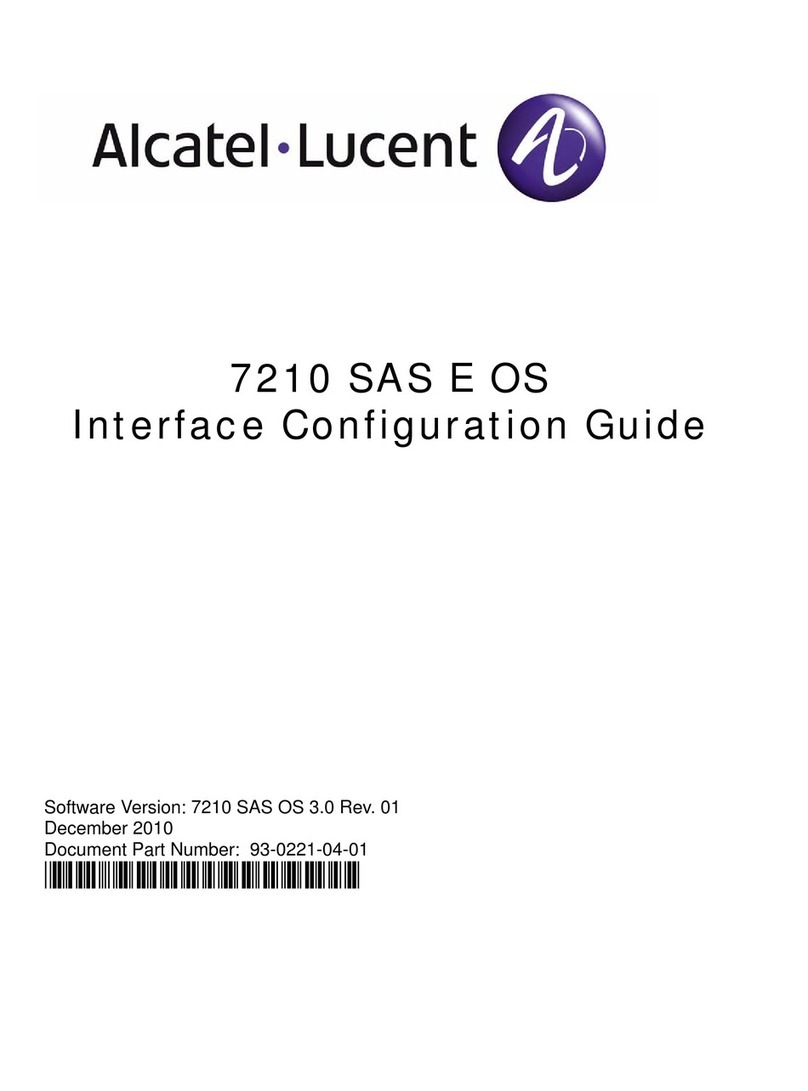
Alcatel-Lucent
Alcatel-Lucent 7210 SAS E OS Configuration guide
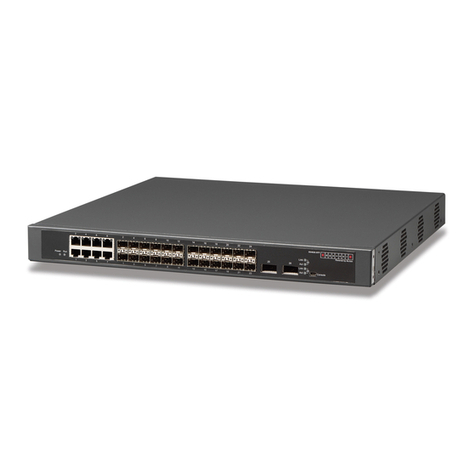
Edge-Core
Edge-Core ES4624-SFP Routing management guide
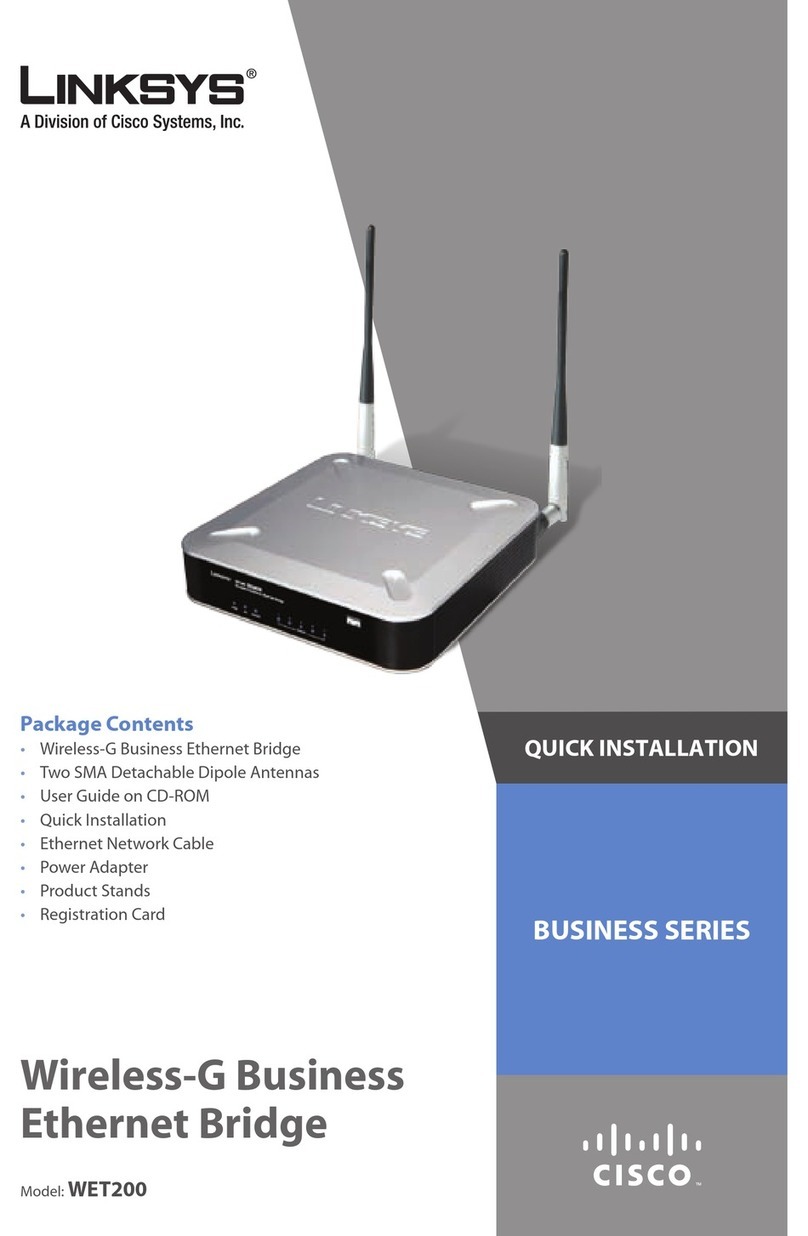
Linksys
Linksys WET200 - Wireless-G Business Ethernet Bridge Quick installation
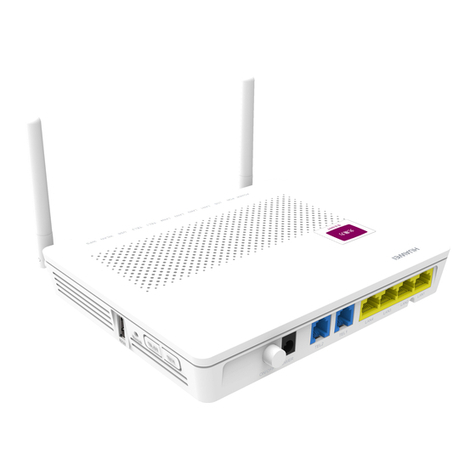
Huawei
Huawei EchoLife HG8240 manual
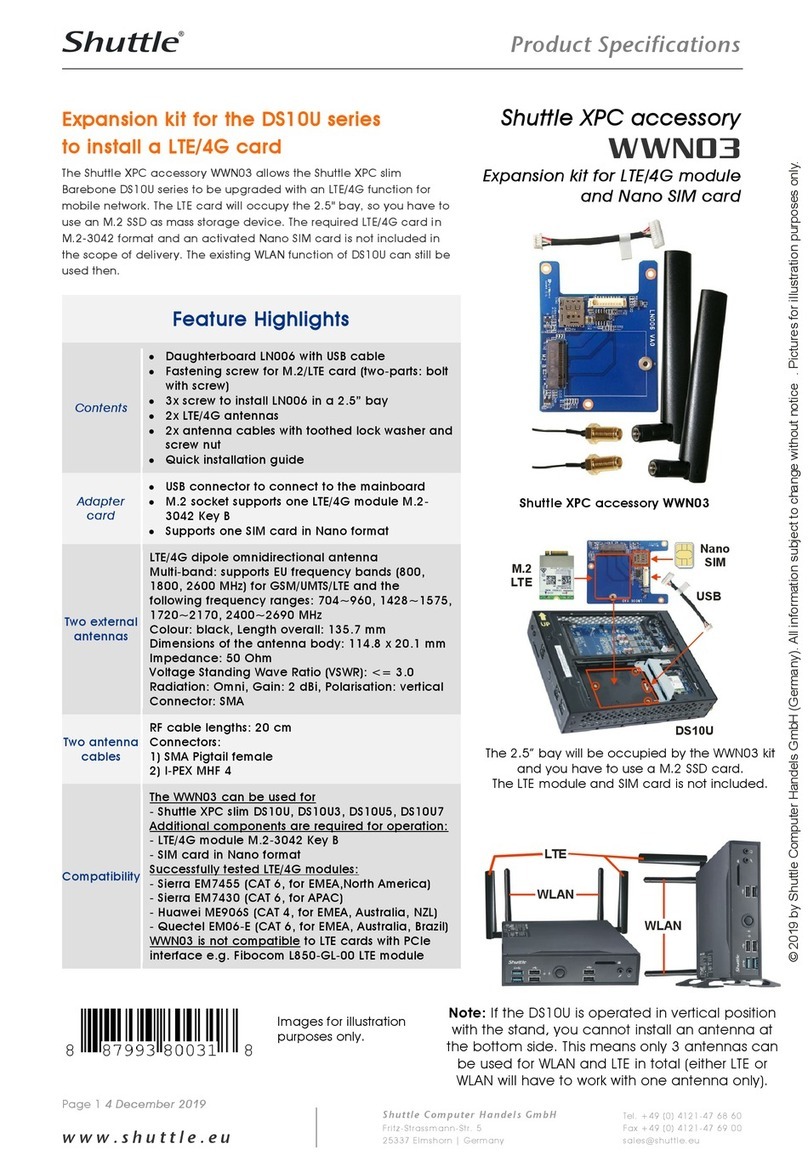
Shuttle
Shuttle WWN03 Product specifications

Comtrend Corporation
Comtrend Corporation WAP-5940 Quick install guide

